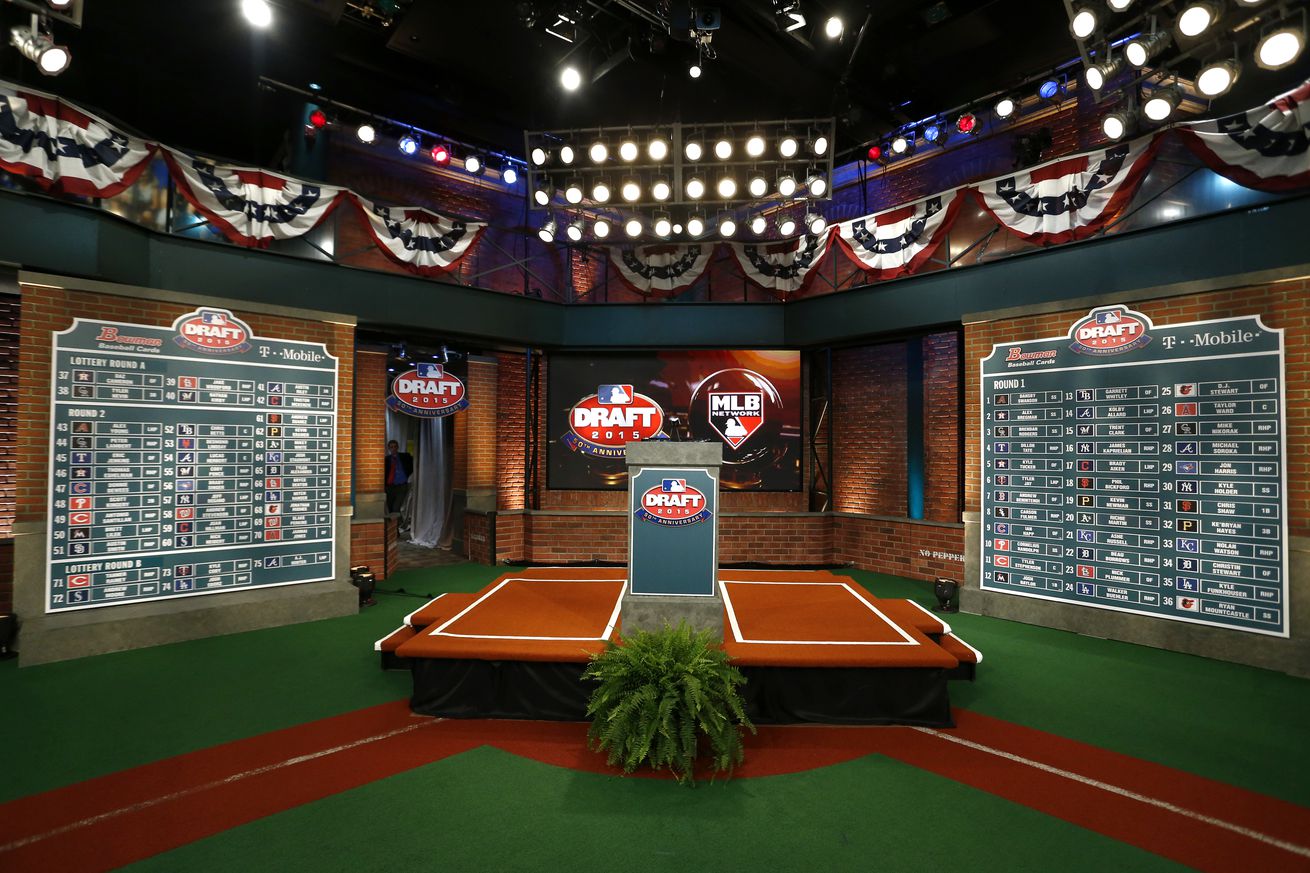 |
| Getty Images |
Mock draft 1.0 can be found here.
1-1 Philadelphia Phillies: LHP A.J. Puk, Florida (video)
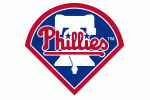 Pros: Much has been made of Puk's troubles this spring, but he has done the exact same as the last couple years. Using his mid 90's fastball that touches 99 and a plus curve, Puk has collected strikeouts at a very high rate this season. Good track record of success in college, international competition, and Cape Cod. Solid mechanics that uses his size effectively with his body parts in sync.
Pros: Much has been made of Puk's troubles this spring, but he has done the exact same as the last couple years. Using his mid 90's fastball that touches 99 and a plus curve, Puk has collected strikeouts at a very high rate this season. Good track record of success in college, international competition, and Cape Cod. Solid mechanics that uses his size effectively with his body parts in sync.
 Pros: Much has been made of Puk's troubles this spring, but he has done the exact same as the last couple years. Using his mid 90's fastball that touches 99 and a plus curve, Puk has collected strikeouts at a very high rate this season. Good track record of success in college, international competition, and Cape Cod. Solid mechanics that uses his size effectively with his body parts in sync.
Pros: Much has been made of Puk's troubles this spring, but he has done the exact same as the last couple years. Using his mid 90's fastball that touches 99 and a plus curve, Puk has collected strikeouts at a very high rate this season. Good track record of success in college, international competition, and Cape Cod. Solid mechanics that uses his size effectively with his body parts in sync.
Cons: High walk rate, 3.99 BB/9 this season, command issues have plagued him at every level, but his pure stuff has been able to cover it up so far. Got arrested for climbing a construction crane once, but at least it wasn't for something worse.
Reasoning: Originally had Groome in this spot, but it seems like Klentak and co. will play it safe with a college arm. Gut feeling says they might take Matt Manning, but that is way too far-fetched.
Reasoning: Originally had Groome in this spot, but it seems like Klentak and co. will play it safe with a college arm. Gut feeling says they might take Matt Manning, but that is way too far-fetched.
M(i)LB Comparison: Sean Newcomb hasn't reached the majors yet, but the former-first round pick has the same traits as Puk: size, stuff, velocity, but control issues as well.
I wrote more about him in a previous piece here.
1-2 Cincinnati Reds: 3B Nick Senzel, Tennessee (video)
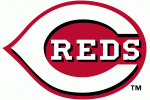 Pros: Very sweet swing, clean bat path and plane will generate lots of line drives, has some raw power. Good approach at the plate, solid baserunner despite lack of raw speed. Polished college hitter, should shoot quickly through farm system.
Pros: Very sweet swing, clean bat path and plane will generate lots of line drives, has some raw power. Good approach at the plate, solid baserunner despite lack of raw speed. Polished college hitter, should shoot quickly through farm system.
Cons: Not much loft in his swing, will limit his power production if no change. Stiff actions on defense, but arm strength can compensate.
Reasoning: Cincy is apparently enamored with Senzel and will also go with the safe college bat. Had Rutherford here before, but he is falling due to his age.
Reasoning: Cincy is apparently enamored with Senzel and will also go with the safe college bat. Had Rutherford here before, but he is falling due to his age.
MLB Comparison: With a little more loft in his swing, could be a similar ballplayer with a skillset like Todd Frazier.
I wrote more about him in a previous piece here.
1-3 Atlanta Braves: OF Kyle Lewis, Mercer (video)
 Pros: One of the top college hitters in the nation, has performed well during the regular season and in the Cape Cod League. Above average power, and overall athleticism, good work ethic. Very impressive stats at Mercer this spring, slashing .395/.535/.731.
Pros: One of the top college hitters in the nation, has performed well during the regular season and in the Cape Cod League. Above average power, and overall athleticism, good work ethic. Very impressive stats at Mercer this spring, slashing .395/.535/.731.
Cons: Still a bit raw, aggressive at the plate but has toned it down this season with more walks and less K's. Attends a smaller school in a lesser conference, so he is facing inferior pitching than that of the SEC or ACC.
Reasoning: Braves really need some bats in their system, and he's supposed to be high on their board.
Reasoning: Braves really need some bats in their system, and he's supposed to be high on their board.
MLB Comparison: Impressive power and can draw walks, but he strikes out quite a bit, offensively similar to Khris Davis.
1-4 Colorado Rockies: LHP Jason Groome, Barnegat HS (New Jersey) (video)
 Pros: As polished as high school pitchers get, fastball runs into the mid-90's with a plus curveball and changeup. Has the size, stuff, and command that are head and shoulders above his peers, with great pitchability and clean mechanics.
Pros: As polished as high school pitchers get, fastball runs into the mid-90's with a plus curveball and changeup. Has the size, stuff, and command that are head and shoulders above his peers, with great pitchability and clean mechanics.
 Pros: As polished as high school pitchers get, fastball runs into the mid-90's with a plus curveball and changeup. Has the size, stuff, and command that are head and shoulders above his peers, with great pitchability and clean mechanics.
Pros: As polished as high school pitchers get, fastball runs into the mid-90's with a plus curveball and changeup. Has the size, stuff, and command that are head and shoulders above his peers, with great pitchability and clean mechanics.
Cons: High school pitchers are always a risk to be taken first overall, but Groome's polish should make him a safe bet. Has been throwing year round for many years, so injury concerns and overuse may be an issue later on.
Reasoning: Arguably the most talented pitcher in the draft, and Colorado seems to take arms every year.
Reasoning: Arguably the most talented pitcher in the draft, and Colorado seems to take arms every year.
MLB Comparison: Fastball/curveball combo with good command and pitchability reminds me of Jon Lester
I wrote more about him in a previous piece here.
1-5 Milwaukee Brewers: RHP Matt Manning, Sheldon HS (California) (video)
 Pros: 6'6'' righty who throws in the mid 90's with a power curveball. Throws strikes with a smooth arm action.
Pros: 6'6'' righty who throws in the mid 90's with a power curveball. Throws strikes with a smooth arm action.
Cons: Has a bit of a hitch in his delivery, arm angle sometimes drops to a bit lower than 3/4 and may result in not getting on top of his curve.
Reasoning: New GM David Stearns' first draft, but with his trades he has shown he is not afraid to take risks. Originally had Virginia righty Connor Jones here, but while his ERA is good, the peripherals aren't what scouts are looking for and he has fallen.
MLB Comparison: Big right hander with power stuff, might have a Matt Harvey-like ceiling if everything breaks right.
 Pros: 6'6'' righty who throws in the mid 90's with a power curveball. Throws strikes with a smooth arm action.
Pros: 6'6'' righty who throws in the mid 90's with a power curveball. Throws strikes with a smooth arm action.Cons: Has a bit of a hitch in his delivery, arm angle sometimes drops to a bit lower than 3/4 and may result in not getting on top of his curve.
Reasoning: New GM David Stearns' first draft, but with his trades he has shown he is not afraid to take risks. Originally had Virginia righty Connor Jones here, but while his ERA is good, the peripherals aren't what scouts are looking for and he has fallen.
MLB Comparison: Big right hander with power stuff, might have a Matt Harvey-like ceiling if everything breaks right.
1-6 Oakland Athletics: OF Blake Rutherford, Chaminade College Prep (California) (video)
Pros: Tall, strong and athletic, Rutherford is a true 5-tool prospect. He can play really run and play defense, but his calling card is his bat. Clean, easy swing with good bat plane and enough loft in his swing to generate power. Has a toe drag with his back foot that is quite common with big league hitters these days.
Cons: Front shoulder flies open early occasionally in games. Toe drag leads to weight being on front foot sometimes, but overall still a polished swing for a high schooler. At 19 years old, quite a bit older than most competition. Is he truly this talented or just beating up on younger pitchers?
Reasoning: Oakland has shown more willingness to take high schoolers in recent years, and while Rutherford is falling, his talent is undeniable and may be too much for the A's to pass up.
Reasoning: Oakland has shown more willingness to take high schoolers in recent years, and while Rutherford is falling, his talent is undeniable and may be too much for the A's to pass up.
1-7 Miami Marlins: C/1B Zack Collins, Miami (video)
Pros: Good loft in his swing, has plus power that projects 25-30 HR's annually. Strong lower body and incorporates it well in swing, will make consistent hard contact at the next level.
Cons: Strikes out a bit and swing can get long at times. Probably won't be able to stay behind the plate, but he has worked hard to improve his blocking and pop time.
Reasoning: The Marlins need some power in their lineup real soon, and the local kid may have the most pop in this year's class. Will have to clear up the organizational logjam with Naylor and Bour though.
MLB Comparison: Kyle Schwarber was a fast-rising, power-hitting catcher that couldn't catch, similar to Collins.
I wrote more about him in a previous piece here.
1-8 San Diego Padres: OF Mickey Moniak, La Costa Canyon HS (California) (video)
Cons: Strikes out a bit and swing can get long at times. Probably won't be able to stay behind the plate, but he has worked hard to improve his blocking and pop time.
Reasoning: The Marlins need some power in their lineup real soon, and the local kid may have the most pop in this year's class. Will have to clear up the organizational logjam with Naylor and Bour though.
MLB Comparison: Kyle Schwarber was a fast-rising, power-hitting catcher that couldn't catch, similar to Collins.
I wrote more about him in a previous piece here.
1-8 San Diego Padres: OF Mickey Moniak, La Costa Canyon HS (California) (video)
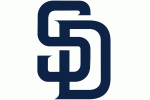 Pros: The Perfect Swing, short to the ball and long through the zone with good extension, controls entire body well, great bat head control and two handed follow through. Can hit hard line drives all fields. Runs very well and also plays excellent defense. Exceptional bat speed.
Pros: The Perfect Swing, short to the ball and long through the zone with good extension, controls entire body well, great bat head control and two handed follow through. Can hit hard line drives all fields. Runs very well and also plays excellent defense. Exceptional bat speed.
Cons: Lack of present power might concern some, room to grow into some more pop but will take time as he fills into his frame.
Reasoning: The local product is an exciting prospect whom Padres scouts have had the chance to see many times. Oakland might take him first, but he certainly won't fall past San Diego.
Reasoning: The local product is an exciting prospect whom Padres scouts have had the chance to see many times. Oakland might take him first, but he certainly won't fall past San Diego.
MLB Comparison: Michael Brantley was a great contact hitter with plus defense in the minors and when he first broke through but has really tapped into the power in recent years, a career arc that Moniak could follow.
1-9 Detroit Tigers: RHP Riley Pint, St. Thomas Aquinas HS (Kansas) (video)
 Pros: Live arm that can reach 102 mph, sitting 95-96. Multi-sport athlete, plays basketball in winter, so fresh arm with less innings due to less time on travel circuit. 6'4'' frame with room to fill out and throw even harder, power curve with good bite.
Pros: Live arm that can reach 102 mph, sitting 95-96. Multi-sport athlete, plays basketball in winter, so fresh arm with less innings due to less time on travel circuit. 6'4'' frame with room to fill out and throw even harder, power curve with good bite.
Cons: Raw and relatively inexperienced, curveball and changeup flash serious potential but very inconsistent. Mechanics involve heavy whipping action of the arm, high effort delivery. Needs polish, but has plenty of time to develop.
Reasoning: May have the most raw talent out of any one in 2016, but the mechanics need serious fixing. High schoolers who throw 102 mph should never fall out of the top 10.
Reasoning: May have the most raw talent out of any one in 2016, but the mechanics need serious fixing. High schoolers who throw 102 mph should never fall out of the top 10.
MLB Comparison: Size, velocity, and pitch repertoire reminiscent of a prime Justin Verlander, but needs lots of development to get there.
I wrote more about him in a previous piece here. Pros: Package of tools are solid, with good power and speed to go with the ability to stick in center field. Very fast and smart baserunner, has power to all fields, good usage of entire body in his swing. Good makeup and work ethic.
Pros: Package of tools are solid, with good power and speed to go with the ability to stick in center field. Very fast and smart baserunner, has power to all fields, good usage of entire body in his swing. Good makeup and work ethic.
Cons: Strikes out a bit excessively as swing can get long at times. Crouched stance and small leg kick could result in changes in eye level during swing.
Reasoning: Local, grew up in the South Side. White Sox have a history of taking toolsy, athletic outfielders in the first round, no reason to change this year.
MLB Comparison: Overall tools package with plus-plus speed and power similar to Gregory PolancoReasoning: Local, grew up in the South Side. White Sox have a history of taking toolsy, athletic outfielders in the first round, no reason to change this year.
1-11 Seattle Mariners: RHP Ian Anderson, Shenendehowa HS (New York) (video)
 Pros: Tall, lanky, projectable frame for higher velocity but already sits comfortably in the low-90's, easy mechanics with good arm speed
Pros: Tall, lanky, projectable frame for higher velocity but already sits comfortably in the low-90's, easy mechanics with good arm speed
Cons: Developing offspeed lacks present feel, from cold-weather state so a little more raw than prep pitchers from California or Florida, but Anderson already has decent command.
Reasoning: Seattle takes chances on high schoolers, and Dipoto is not afraid of doing the same. Stays in the same spot as last time.
Reasoning: Seattle takes chances on high schoolers, and Dipoto is not afraid of doing the same. Stays in the same spot as last time.
MLB Comparison: Clay Buchholz has similar size and stuff, development path could be similar to Anderson's.
1-12 Boston Red Sox: RHP Dakota Hudson, Mississippi State (video)
 Pros: Mid-90's fastball reaches 97, hard cut-slider may be the nastiest pitch in the class. Curve and change are decent as well, extreme groundballer who can pick up lots of K's with his plus stuff.
Pros: Mid-90's fastball reaches 97, hard cut-slider may be the nastiest pitch in the class. Curve and change are decent as well, extreme groundballer who can pick up lots of K's with his plus stuff.Cons: Lack of track record as a starter, lack of polish in first two years of college. Seems to have turned a corner last summer at the Cape, but the inconsistencies still flash.
Reasoning: Probably the most Red Sox-y type player in the draft outside of Senzel, who was originally mocked here before rising up boards.
MLB Comparison: Dirty stuff and ground ball rates, combined with occasional command problems, could be another Tyson Ross.
1-13 Tampa Bay Rays: RHP Forrest Whitley, Alamo Heights HS (Texas) (video)
 Pros: Gargantuan 6'7'' 250 lbs prep righty has a mid-to-upper 90's fastball with life. Clean mechanics, decent offspeed offerings.
Pros: Gargantuan 6'7'' 250 lbs prep righty has a mid-to-upper 90's fastball with life. Clean mechanics, decent offspeed offerings.Cons: Curveball and changeup both have nice break, but needs to work on commanding them. Pro coaching should help a lot.
Reasoning: The Rays like multi-faceted ballplayers, and Whitley is one of the more complete-packaged prep arms in the draft.
MLB Comparison: The name Nate Karns doesn't inspire much confidence, but a hard throwing righty with a good curveball, a mid-3's ERA and 9.0 K/9 is a great #2/3 starter, which Whitley could become.
1-14 Cleveland Indians: RHP Jordan Sheffield, Vanderbilt (video)
 Pros: With his brother Justus already in the system, the Indians could take the flame-throwing righty this season. Sits 94-96 with his fastball, can hit 98 with a plus slider and a decent changeup.
Pros: With his brother Justus already in the system, the Indians could take the flame-throwing righty this season. Sits 94-96 with his fastball, can hit 98 with a plus slider and a decent changeup.Cons: Lengthy injury history, high-effort mechanics, short right handed pitcher, many scouts doubt that he can become a starter long-term.
Reasoning: Brother in the system, outstanding stuff should be very attractive to the pitching-minded organization. Was in the same spot before, makes too much sense to change.
MLB Comparison: Potential for three plus pitches and absolutely nasty stuff, his size and stuff is similar to Lance McCullers.
1-15 Minnesota Twins: LHP Braxton Garrett, Florence HS (Alabama) (video)
 Pros: High school lefty already in the low-90's with a devastating curveball. Has solid command and pitchability.
Pros: High school lefty already in the low-90's with a devastating curveball. Has solid command and pitchability.Cons: Changeup needs work. Cocks elbow before throwing, combined with a low angle may lead to injury.
Reasoning: High ceiling left hander already with a plus pitch. Could go top-10 and if he is here, Terry Ryan will not hesitate.
MLB Comparison: Delivery, fastball, and curveball all similar to Cole Hamels, but Garrett will need lots of polish to reach his ace-status.
1-16 Los Angeles Angels: SS/3B Nolan Jones, Holy Ghost Prep (Pennsylvania) (video)
 Pros: Outstanding bat speed with raw power and sweet swing to match, Jones may have the highest hitting ceiling in the draft. Good extension in his swing. Big kid at 6'4'', could have 25 HR power as he fills out.
Pros: Outstanding bat speed with raw power and sweet swing to match, Jones may have the highest hitting ceiling in the draft. Good extension in his swing. Big kid at 6'4'', could have 25 HR power as he fills out.Cons: Strong arm and good hands, but he may be too big to play short and shift over to third base. Pre-swing load is kind of unorthodox with his elbows together, raw approach at the plate can lead to over-aggressiveness.
Reasoning: A lot of other mock drafts have Jones being an obvious mock to the Yankees, but with former scouting director Billy Eppler now with the Angels he probably won't fall that far.
MLB Comparison: Jake Lamb is still young and hasn't hit his prime yet, but the upside he has is similar to that of Jones.
1-17 Houston Astros: RHP T.J. Zeuch, Pittsburgh (video)
 Pros: Tall righty throws in the mid 90's good curve and changeup, clean mechanics, fresh arm and throws strikes. One of the top groundballing righties in the nation.
Pros: Tall righty throws in the mid 90's good curve and changeup, clean mechanics, fresh arm and throws strikes. One of the top groundballing righties in the nation.Cons: Some scouts are worried about his abilities to collect strikeouts in the pros despite a 9.56 K/9 in college.
Reasoning: Houston loves groundball pitchers, especially for Minute Maid Park, and the fact that Zeuch throws in the mid-nineties is a plus considering the Astros soft-tossing ways.
MLB Comparison: Hard-throwing righty Aaron Sanchez has silenced critics this season by putting up a good strikeout rate while getting lots of groundballs in the rotation, and Zeuch will be expected to do the same.
1-18 New York Yankees: 3B Josh Lowe, Pope HS (Georgia) (video)
 Pros: Has raw power to go with natural loft in his swing, strong arm at third base as well as plus speed. Loose and athletic, Lowe should become a dual threat on both offense and defense.
Pros: Has raw power to go with natural loft in his swing, strong arm at third base as well as plus speed. Loose and athletic, Lowe should become a dual threat on both offense and defense.Cons: Swing can get long and loopy when he extends his hands, might have extreme flyball tendencies and pop up quite often.
Reasoning: Lowe is considered by scouts to be nearly identical to Jones, and if Jones doesn't fall here Lowe should easily be Plan 1B.
MLB Comparison: Having plus power, strong arm and projectable plus defense, Lowe's ceiling may mirror Kyle Seager.
 Pros: Power/speed combo is intriguing, natural loft in his swing. Polished hit tool as well. Strong throwing arm. Advanced approach at the plate, well beyond his years.
Pros: Power/speed combo is intriguing, natural loft in his swing. Polished hit tool as well. Strong throwing arm. Advanced approach at the plate, well beyond his years.Cons: Swing can get long with average bat speed and very slow hands, which may lead to excessive strikeouts. Despite good speed and arm, not a terrific defensive outfielder and may end up as a plus first baseman instead.
Reasoning: Advanced for a high schooler as he is the son of famed hitting coach Dave Kiriloff, Mets would love to have a prep hitter of his caliber.
MLB Comparison: Kole Calhoun of the Angels is a good representation of Kiriloff's ceiling, a strong armed outfielder with a good bat.
1-20 Los Angeles Dodgers: RHP Cal Quantrill, Stanford (video)
 Pros: The son of former Yankee Paul Quantrill, Cal has better stuff than his dad, with a fastball that reaches 95 and solid offspeed offerings like a plus changeup and at least average curve and slider. His mechanics are decent, and has good command and pitchablity.
Pros: The son of former Yankee Paul Quantrill, Cal has better stuff than his dad, with a fastball that reaches 95 and solid offspeed offerings like a plus changeup and at least average curve and slider. His mechanics are decent, and has good command and pitchablity.Cons: Still rehabbing from Tommy John surgery, but aside from the medical red flags, Quantrill has the complete package on the hill.
Reasoning: With their impressive prospect depth and deep pockets, the Dodgers are one of the teams who can afford to draft a TJ rehabber in the first round.
MLB Comparison: Assuming all the physical issues check out, the performance of Michael Wacha is something that Quantrill could match and achieve if he cracks the majors.
1-21 Toronto Blue Jays: LHP Eric Lauer, Kent State (video)
 Pros: Four pitch mix with good command of all of them, sits in the low 90's with his fastball and can hit 94. Had the most dominant season in college baseball with a 0.69 ERA, 0.74 WHIP, and a 10.82 K/9.
Pros: Four pitch mix with good command of all of them, sits in the low 90's with his fastball and can hit 94. Had the most dominant season in college baseball with a 0.69 ERA, 0.74 WHIP, and a 10.82 K/9. Cons: Outstanding numbers came in a small conference, lack of projectability and may have maxed out as a #4/5.
Reasoning: Polished arm complements the Blue Jays abundance of raw pitchers in the system.
MLB Comparison: Blue Jays lefty J.A. Happ has been terrific for the last year-and-a-half and may be what Lauer's ceiling is like.
1-22: Pittsburgh Pirates: RHP Justin Dunn, Boston College (video)
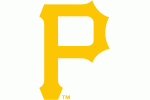 Pros: Right-hander put himself on the mpa after a strong showing in the Cape Cod League and following it up with a 1.49 ERA campaign in 2016.
Pros: Right-hander put himself on the mpa after a strong showing in the Cape Cod League and following it up with a 1.49 ERA campaign in 2016.Cons: Short track record of success, has not shown ability to handle a starter's workload. Secondaries need development, but are decent as is.
Reasoning: Pirates have a history of success dealing with fresh arms, and with 4 different pitches the Pittsburgh coaching staff will have plenty of fun developing Dunn into a major league starter.
MLB Comparison: Michael Pineda has been a solid major league starter with above-average stuff despite not being very durable. Dunn could be similar, with a high K-rate.
1-23 St. Louis Cardinals: LHP Joey Wentz, Shawnee Mission East HS (Kansas) (video)
 Pros: Low-to-mid 90's fastball, above average curve and some feel for a change. Good mechanics and command
Pros: Low-to-mid 90's fastball, above average curve and some feel for a change. Good mechanics and commandCons: Struggled with dead arm last season, and is rumored to be looking for a very high bonus.
Reasoning: Wentz is one of the best high school pitchers in the class, but his high bonus demands might cause him to fall. The Cardinals are rumored to be in on him, and they have a big enough bonus pool to draft him. Had Nick Banks in this spot before but a subpar spring has him falling to third-round territory.
MLB Comparison: Similar to Steven Matz as in terms of stuff and pitchability, even though he is much farther developed than Matz when he was in high school.
1-24 San Diego Padres: SS Delvin Perez, Professional Educational HS (Puerto Rico) (video)
 Pros: Plus plus defender at short, strong arm, outstanding range, and smooth actions. Lanky with room to fill out, potential with the bat, but unbelievably gifted defensively. Very high energy and high effort ballplayer.
Pros: Plus plus defender at short, strong arm, outstanding range, and smooth actions. Lanky with room to fill out, potential with the bat, but unbelievably gifted defensively. Very high energy and high effort ballplayer.
Cons: Very raw at the plate, lacks plate discipline. Susceptible to offspeed, swing includes an unorthodox weight transfer and lots of excessive noise. Room to grow as a hitter but defense will take him a long way.
Reasoning: Perez is the top prep shortstop, but with issues with his makeup and bat he seems to be falling down boards. With three first round picks the Padres should be able to sign him.
Reasoning: Perez is the top prep shortstop, but with issues with his makeup and bat he seems to be falling down boards. With three first round picks the Padres should be able to sign him.
MLB Comparison: It may seem like a lazy comp, but Andrelton Simmons is similar to Perez as a shortstop with amazing defense but a questionable yet projectable bat with the tools ahead of production.
1-25 San Diego Padres: 1B/3B Will Craig, Wake Forest (video)
 Pros: Strong and powerful, with good loft in his swing, Craig has the power to mash 25 HRs every year. Solid plate discipline. Cannon of an arm.
Pros: Strong and powerful, with good loft in his swing, Craig has the power to mash 25 HRs every year. Solid plate discipline. Cannon of an arm.
Cons: Stiff and awkward defensively. Swing is reliant on upper body and arms, will need to utilize his big lower body to generate more power.
Reasoning: Safe college bat to offset the prep draftees Moniak and Perez, but Craig has good upside as well.
MLB Comparison: Trevor Plouffe isn't a sexy comp, but he has quietly put up power numbers to go with his first-round pedigree.
I wrote more about him in a previous piece here.
1-26 Chicago White Sox: RHP Robert Tyler, Georgia (video)
 Pros: Throws hard, sitting 96-98 and touching 100 on the fastball with sink and run, as well as a changeup that it at least average, if not better.
Pros: Throws hard, sitting 96-98 and touching 100 on the fastball with sink and run, as well as a changeup that it at least average, if not better.
Cons: Poor command of the fastball, breaking ball isn't sharp, could use better extension in his delivery.
Reasoning: After taking a position player, Chicago could look for an arm, and Tyler's velocity is premium.
MLB Comparison: Red Sox right-hander Matt Barnes has great velo on his fastball that plays up in the bullpen, which is where Tyler might end up if his overall package doesn't further develop.
1-27 Baltimore Orioles: C/1B Matt Thaiss, Virginia (video)
Pros: Outstanding plate discipline to go with a clean line drive stroke with power. Should be able to hit for average at the next level.1-25 San Diego Padres: 1B/3B Will Craig, Wake Forest (video)
 Pros: Strong and powerful, with good loft in his swing, Craig has the power to mash 25 HRs every year. Solid plate discipline. Cannon of an arm.
Pros: Strong and powerful, with good loft in his swing, Craig has the power to mash 25 HRs every year. Solid plate discipline. Cannon of an arm.Cons: Stiff and awkward defensively. Swing is reliant on upper body and arms, will need to utilize his big lower body to generate more power.
Reasoning: Safe college bat to offset the prep draftees Moniak and Perez, but Craig has good upside as well.
MLB Comparison: Trevor Plouffe isn't a sexy comp, but he has quietly put up power numbers to go with his first-round pedigree.
I wrote more about him in a previous piece here.
1-26 Chicago White Sox: RHP Robert Tyler, Georgia (video)
 Pros: Throws hard, sitting 96-98 and touching 100 on the fastball with sink and run, as well as a changeup that it at least average, if not better.
Pros: Throws hard, sitting 96-98 and touching 100 on the fastball with sink and run, as well as a changeup that it at least average, if not better.Cons: Poor command of the fastball, breaking ball isn't sharp, could use better extension in his delivery.
Reasoning: After taking a position player, Chicago could look for an arm, and Tyler's velocity is premium.
MLB Comparison: Red Sox right-hander Matt Barnes has great velo on his fastball that plays up in the bullpen, which is where Tyler might end up if his overall package doesn't further develop.
1-27 Baltimore Orioles: C/1B Matt Thaiss, Virginia (video)
Cons: Questions about sticking behind the plate with below average arm and framing skills. Wide stance may limit power and swing path suggests ground ball tendencies.
Reasoning: Due to a small bonus pool, Baltimore may be limited to taking the best available college bat, who at this point in the draft would be Thaiss.
MLB Comparison: A catcher/first baseman in the majors who profiles similarly is John Jaso, with the plate discipline and 10-HR power. They have similar batting stances as well.
1-28 Washington Nationals: OF Taylor Trammell, Mt. Para Christian HS (Georgia) (video)
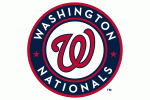 Pros: Tools! Plus speed and good raw power and bat speed. Good arm but it takes a violent delivery to use it. Shows some present contact ability, can lay down a bunt.
Pros: Tools! Plus speed and good raw power and bat speed. Good arm but it takes a violent delivery to use it. Shows some present contact ability, can lay down a bunt.Cons: Really raw! Downward, choppy swing path limits tapping into power. Might end up striking out too much for his power production. Will take a lot of patience and development, but the end result could be a stud.
Reasoning: With back to back late first round pick, the Nats can take one safe guy and one risky guy. Trammell is very raw, but he has all the tools to succeed.
MLB Comparison: For an example of a guy who took years to figure it out, look at Jackie Bradley Jr. of the Red Sox. Trammell's defense should be good enough to buy him several year's of development for his bat.
1-29 Washington Nationals: RHP Zack Burdi, Louisville (video)
 Pros: Triple digit fastball with a plus slider, and surprisingly good command of both pitches. 14.44 K/9 against a 2.20 BB/9.
Pros: Triple digit fastball with a plus slider, and surprisingly good command of both pitches. 14.44 K/9 against a 2.20 BB/9.Cons: Slings his arm to deliver ball, may cause injury later on. Reliever only, but someone might be tempted to have him try starting.
Reasoning: The safest bet in the class, could pitch out of a major league bullpen right now. Having at least one success can offset the risk of taking Trammell.
MLB Comparison: Trevor Rosenthal of the Cardinals is the obvious comp, a triple digit fireballer with a good breaking ball too.
1-30 Texas Rangers: OF Buddy Reed, Florida (video)
 Pros: Athletic and toolsy, Reed may have the most raw talent out of any college outfielder in the draft. Switch hitter with plus speed and is good at keeping his hands inside the ball, spray line drives. Frame suggests power to come, can lay down a bunt.
Pros: Athletic and toolsy, Reed may have the most raw talent out of any college outfielder in the draft. Switch hitter with plus speed and is good at keeping his hands inside the ball, spray line drives. Frame suggests power to come, can lay down a bunt.
Cons: Prone to striking out, raw in terms of approach. Works count well but passive on hittable pitches early. Choppy hand path from the right side, sometimes out on front foot from the left, limits raw power.
Reasoning: Texas loves their toolsy outfielders, and the Reed selection gives them just that. He has fallen from his earlier spot due to a bad season, but the talent is there.
Reasoning: Texas loves their toolsy outfielders, and the Reed selection gives them just that. He has fallen from his earlier spot due to a bad season, but the talent is there.
MLB Comparison: Speedy switch hitter with good defense and a bit of raw, undeveloped pop that he might tap into later on, similar to Coco Crisp
1-31 New York Mets: OF Bryan Reynolds, Vanderbilt (video)
 Pros: Disciplined approach at the plate, hits line drives to all fields with enough strength to hit balls out. A strong defender, he has good speed and can steal 20+ bags in the majors.
Pros: Disciplined approach at the plate, hits line drives to all fields with enough strength to hit balls out. A strong defender, he has good speed and can steal 20+ bags in the majors.Cons: A switch hitter, Reynolds is prone to becoming too slappy from the left side, out in front on his swing. Happens when he hits righty as well, could sap power production. Average arm may limit him to left field.
Reasoning: A college player to offset the Kiriloff selection, Reynolds is a safe, high-floor player that gives the Mets at least one guarantee from their two first-round picks. Originally mocked to the Angels, Reynolds has fallen not because of his performance but because others have surpassed him in terms of prospect status.
MLB Comparison: Being a switch hitter with speed, some raw pop and decent defense, Angel Pagan is a reasonable comparison for what Reynolds could be.
1-32 Los Angeles Dodgers: OF Will Benson, The Westminster Schools (Georgia) (video)
 Pros: Six-foot-six lefty with big time pop, Benson has the most power potential in the draft class. Smooth bat plane through the zone, slight uppercut to hit balls out. Strong and built, he moves well for his size and should be able to hold his own in right field. Young for his draft class
Pros: Six-foot-six lefty with big time pop, Benson has the most power potential in the draft class. Smooth bat plane through the zone, slight uppercut to hit balls out. Strong and built, he moves well for his size and should be able to hold his own in right field. Young for his draft classCons: Lots of twitching pre-swing, occasional changes in eye level during swing. As he gets bigger he might take a step back defensively and slow down on the bases.
Reasoning: After taking Quantrill, the college pitcher, the Dodgers will take a high upside bat to maximize their pool spendings.
MLB Comparison: Jay Bruce has gotten a bad rep with poor recent seasons, but before his decline he was one of the top power producers in the National League, and Benson could match that production.
1-33 St. Louis Cardinals: RHP Connor Jones, Virginia (video)
 Pros: Low-to-mid 90's fastball, very good cut-slider type pitch that is his go-to out pitch. Gets lots of ground balls with a plus changeup, might be the most polished and safe starting pitcher in this draft class.
Pros: Low-to-mid 90's fastball, very good cut-slider type pitch that is his go-to out pitch. Gets lots of ground balls with a plus changeup, might be the most polished and safe starting pitcher in this draft class.
Cons: Lack of ace upside, sinkerballer will not pick up very many strikeouts, but his ground-ball based approach should shoot him through the minors and settle in as a solid #3 starter in the majors.
Reasoning: After mocking him at fifth overall to the saber-savvy Brewers, Jones has disappointed with lackluster peripherals. The Cardinals, who hold the last two picks, probably won't pass on him, though, so Jones won't last past the end of the first round.
MLB Comparison: While Jake Odorizzi is more of a flyball pitcher, the overall numbers and pitch arsenal is generally what Jones could produce.
1-34 St. Louis Cardinals: OF/1B/C Jameson Fisher, Southeastern Louisiana (video)
Reasoning: After mocking him at fifth overall to the saber-savvy Brewers, Jones has disappointed with lackluster peripherals. The Cardinals, who hold the last two picks, probably won't pass on him, though, so Jones won't last past the end of the first round.
MLB Comparison: While Jake Odorizzi is more of a flyball pitcher, the overall numbers and pitch arsenal is generally what Jones could produce.
1-34 St. Louis Cardinals: OF/1B/C Jameson Fisher, Southeastern Louisiana (video)
 Pros: Smooth left handed swing with a bit of power, Fisher's bat will take him a long way. Great plate discipline as well, put up a video game-like .431/.563/.702, can run the bases.
Pros: Smooth left handed swing with a bit of power, Fisher's bat will take him a long way. Great plate discipline as well, put up a video game-like .431/.563/.702, can run the bases.
Cons: Plays in a small conference, positionless on defense. Did not show much power before this season.
Reasoning: With the lack of depth in the college hitting class, the Cards nab Fisher to offset the cost of Wentz, even though he is a second to third round talent. He might not be around when the Cardinals pick next, so it justifies the selection. He also seems like exactly the kind of guy who would succeed with the Cardinals fairy dust hitting magic.
MLB Comparison: Similar to Matt Joyce, Fisher should go on to be a solid contributor at the plate with some pop and patience while not being a complete liability on the field.
Four players from my original mock draft (23 picks) have fallen off the board, right-handers Logan Shore and Kevin Gowdy, catcher Chris Okey, and outfielder Nick Banks. This is partially due to my own misjudgment of their stock in April, although Shore and Okey have both been playing like first-rounders so far. Gowdy has fallen due to his strong commitment to pitching factory UCLA, and while Banks had a subpar season, with his high pedigree he should be a steal later on. The biggest reach on this list is Jameson Fisher, but if any team is willing to nab him this early, it would be the Cardinals. Regardless of their position, however, with the draft coming up on Thursday, they and many other young men will be realizing their dreams come true. Be sure to tune in to MLB Network to watch the draft at 6 PM Eastern/3 PM Pacific on Thursday!
Four players from my original mock draft (23 picks) have fallen off the board, right-handers Logan Shore and Kevin Gowdy, catcher Chris Okey, and outfielder Nick Banks. This is partially due to my own misjudgment of their stock in April, although Shore and Okey have both been playing like first-rounders so far. Gowdy has fallen due to his strong commitment to pitching factory UCLA, and while Banks had a subpar season, with his high pedigree he should be a steal later on. The biggest reach on this list is Jameson Fisher, but if any team is willing to nab him this early, it would be the Cardinals. Regardless of their position, however, with the draft coming up on Thursday, they and many other young men will be realizing their dreams come true. Be sure to tune in to MLB Network to watch the draft at 6 PM Eastern/3 PM Pacific on Thursday!
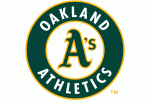


No comments:
Post a Comment